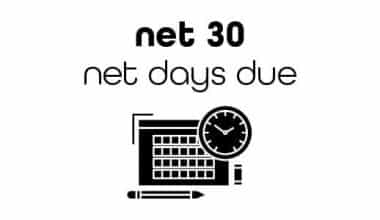Your goal is to create high-quality, relevant material that engages your audience, builds brand trust, and drives business—but how can you adapt your social content to cut through the noise, provide value to your audience, and ultimately impact your bottom line?
A social media plan is a detailed blueprint for your social marketing strategy that will assist you in doing so.
If you need a social media marketing plan, start here.
A social media plan assists a company in determining its target demographic, social networks to join, and the type of content to create and publish. It is an essential component of your overall marketing strategy. Once you’ve developed a social media plan, you can begin working on improving your content and cadence, evaluating follower engagement, and developing deeper relationships with your audience.
Almost every company has a social media presence. Yet, success on social media demands more than merely posting daily updates. Do you know what your objectives are and who you want to reach? Do you know what kind of material your audience is interested in and why they would want to interact with you? Addressing those issues and progressing beyond haphazard social presence necessitates a strategic plan.
Step #1: Establish Your Goals
First and foremost, you must begin slowly. You must ask yourself a serious question, and the answer may require you to discontinue reading this article.
Why are you dedicating so much time, effort, and money to social media?
And we’re talking about a substantial investment. You can’t half-assed this if you want to achieve on whatever social media outlets you pick.
It’s more difficult than ever to build a social following. It’s more difficult to get your brand and content visible in a social media landscape that values sponsored promotion over compensating you for your efforts.
I don’t mean to scare you, but I do want you to be aware of the facts.
Therefore, know what you’re getting yourself into and what you want to get out of it.
What do you hope to gain from social media?
And the answer can’t just be, “I’m on Social Media because I have to.”
Primary goals:
- Boost Brand Awareness
- Drive Sales and Lead Generation
- Create a Community for Your Brand
Defining the goals of your social media marketing plan will help you decide which platforms to use, what to post, and what metrics to track (which determines your return on investment).
Begin by establishing specific, actionable goals. Don’t just go on a social media platform and start posting randomly. Know what you want from the beginning.
Consider how you intend to increase your social media presence.
Take a look at the following:
- Time: How many hours per week can you dedicate to a social network? Allow one hour every day per social media network – and more in the early phases.
- Resources: The majority of social media sites are mostly visual in nature. Even Twitter and Facebook require some design in order to catch users’ attention. Do you have access to those resources? What about a content-creation team?
- The intended audience is as follows: What is the makeup of your target demographic? Do you know what social media networks they use if you know?
Step #3: Make Your Profiles and Pages More Effective
Your social media accounts and profiles are an extension of your website. Although being on someone else’s website, everything there is yours. It is entirely your fault.
Thus, if it looks like a blazing trash can, you’re to blame.
Checklist for Page Optimization:
- Improve your profile images and headers.
- Submit Detailed Company Details
- Modify the URL of your Facebook Page
- Provide a Facebook Page CTA.
- SEO optimization
- To the top Facebook Page Tabs, pin your best content or limited-time promotions.
Step #4: Increase Your Following
Have you ever wondered why a beggar on the street always maintains a little money in his hat?
Individuals are more likely to like something that has previously been liked.
This is why customer testimonials, positive reviews, and influencer referrals are effective. I don’t believe you unless someone has gone before me.
So, let’s start building your social following right away.
Social Promotions are still the most effective way to accomplish this. You can spend the next few months developing a content strategy, but (speaking from experience), it’s nearly impossible to create a social media presence from scratch.
A solid foundation is essential for your social media marketing plan.
1. Sweepstakes
For first-time contestants, Facebook Sweepstakes promotions are ideal. They are the most basic sort of promotion and are perfect for quick and easy lead-generating.
2. Referral Marketing
Referral marketing works by incentivizing sharing. Participants spread the word about the contest to their friends, coworkers, and family. Whoever gets the most people in their network to enter the contest wins the grand prize, and everyone else receives a discount code as a thank-you for participating.
3. Photo Competition
Fans or users of social media networks upload a photo and then share your contest with their friends, family, and coworkers, asking them to vote (voters usually have to enter lead information, as well, by the way). This greatly expands the reach of your promotion.
If you’ve decided to include a giveaway in your social media plan, here are some great prize options.
Summer Competitions:
- Sporting event tickets
- Set of luggage
- Camera mounted on a tripod
- Camping Package with Aquarium/Amusement Park/Zoo
- Photo prints worth $50
- Back-to-school supplies: Backpack, pens, markers, and calculator
- Sponsorship of a sports team
- E-reader
- Bike/skateboard/rollerblades
- Body wash reward bundle includes deodorant, soap, razors, and other items.
Winter Competitions:
- Wearable Technology (fitness trackers)
- Baking set (electric mixer, whisks, and so on).
- Lift tickets and ski rentals
- Box set of Christmas movies
- Unappealing sweater Christmas party collection
- Decoration of lights by professionals
- Set up a holiday table
- Mugs/apple cider/hot chocolate
- Tickets for Christmas activities such as the Nutcracker, the Christmas train, and the Garden of Lights
- Personal training session/gym membership
People respond to those who sound like them (at our core, we are tribal). Consumers will not respond well if your brand is completely faceless, yet some markets will respond favorably if you are extremely casual.
Choose three traits that your brand voice should convey. Keep these in mind when developing content, writing social media posts, and replying to your audience.
These “brand voice” traits should be appealing to your target audience:
- If you’re writing to mid-level executives, maintain a professional tone and avoid memes, amusing jokes, or puns; likewise, avoid politics and current events.
- If you want to attract professional millennials, be both professional and relaxed. Intersperse high-quality educational postings with content about current events.
- If you want to reach young people (Gen-Z), share behind-the-scenes content in a casual tone. Post frequently and use TikTok and Influencers.
Every strong social media content plan revolves around a calendar.
Social media posting can be difficult. Where can you all fit it in if you’re on numerous platforms, sharing a dozen times a day, and your marketing team needs you to promote an upcoming webinar they forgot about until now?
A social media content calendar can help with this. It provides an outline of what material is being pushed on which channels and when in your social media marketing plan.
Make certain that your content staff is aware of the calendar in your social media marketing plan strategy. If they need something pushed, make sure you are aware of it, and if a holiday is approaching that you know you should capitalize on, make sure they are preparing something relevant for you.
Step #7: Determine Your Influencers
Influencers on social media can make or break any social media marketing plan strategy.
Having a “in” with a good list of your industry’s leaders implies increased brand exposure, content engagement, legitimacy, and trust.
Consider this. What may we expect if Seth Godin saw this post and Tweeted it to his 572,000 Twitter followers?
- A significant increase in visitors to the article, enhancing its organic reach and (likely) SEO ranking.
- A greater understanding of myself as a person and Wishpond as a brand. The increased traffic to the blog would result in further social sharing and comments.
- Greater trust in myself as a person and in Wishpond as a brand. Even if they don’t know me, they trust Seth, and if he trusts me that’s good enough for a huge proportion of his Followers.
And it works for every industry. Every one of them has thought-leaders who people look to for inspiration, thought-leadership, and to “tell them what’s important.”
Working with influencers is now part of any good social media plan strategy.
You can rate your influencers in three ways:
- Context: Is this individual consistent with my brand? Lady Gaga has a lot of social media followers, but would any of them care if she supports your SEO consultancy business?
- Reach: Does this person have a network that I should tap into? This can be due to the network’s size, but it can also be due to the network’s enthusiasm for the issue. This score can also be increased based on the influencer’s competence or the industry’s regard for them.
- Actionability: Is this person likely to spread my content? Are they open to conversation or closed off and anti-social despite their network?
- Search by hashtag or identify the hashtags used by your target influencers.
- Make a Twitter list of your influencers to help you organize and follow them more efficiently.
- Examine Influencers’ “retweets” to see how “actionable” their interaction with you is.
- Keep an eye on what they’re doing. How do they interact with their followers? Are they redistributing other people’s content? How frequently, and what appears to be the response?
Using Tools to Find Influencers
- Buzzsumo: Discover influencers by searching. Evaluate and filter them according to their reach, authority, influence, and involvement. Follow and add to Twitter lists directly from the platform. Keep track of their activities (what they share, how often, and where).
- Traackr: Traackr lets you upload Influencer lists, assign ownership to team members, and measure conversations and engagement. Better yet, Traackr’s extensive analytics platform allows you to determine the influence of your Influencers.
Influencer Motivation
- Make a blog trade. Post on their blog and invite them to do the same on yours.
- Promotion of trade. If you have an email list, inform an influencer that you will promote their material in exchange for them sharing yours.
- Add a link to an influencer’s material (this helps with SEO and brand exposure) and ask them where they want the link to go to visitors.
- Pay for a guest post (on your blog) and distribution to their readership.
- Be prepared to spend if you decide to invest in Instagram. Nonetheless, it can be extremely profitable.
Step #8: Locate and Develop Your Content
To ensure the success of your social media marketing plan strategy, you cannot simply repeat the same cat photo, nor can you continuously provide promotional content.
The purpose of social media content sharing is dual…
1. Content Curation
Curated content is content that you find that is related to your business but was not created by it.
Curated content sources include:
- Feedly
- Juxtapost
- Learnist
- Storify
- Triberr
- PostPlanner
Influencer content is an excellent source of curated material. Several sites, such as Feedly and BuzzSumo, will let you “subscribe” to an influencer’s content outlets.
Influencer marketing at its finest: Follow an influencer and then share their material with creative analysis and thoughts for a few weeks (remember to @mention them when you do). This increases the likelihood that they will follow you back and recognize your name when you contact them with a request for feedback, a quote, or a “recommended link.”
2. Created Content
Create content that your target audience wants to read. Before you begin any content strategy, ask yourself the following five questions:
- What do they care about?
- What are their annoyances?
- What kind of content are they looking for?
- What is the most perplexing or difficult aspect of your industry?
- What do they need to accomplish their goals?
Wishpond, for example, develops lead generation and management software. Social promotions, landing pages, and popups, as well as email marketing and lead management/behavioral-triggered tools, are among our offerings. Because of the social promotion aspect of what we do, a sizable section of our audience is interested in social media marketing.
Step #9: Publication
If you want to establish a more effective social media marketing plan strategy, you must post at the proper moment.
This is true regardless of the social media network you are using. The majority of people work during the three hours before lunch and the last hour before they leave. And the majority of folks work from Monday through Wednesday. As a result, many businesses discover that the optimal time to publish is between 8 and 9:30 a.m. on Wednesdays and 1-4 p.m. on Sundays.
- Make your post more specific (Facebook allows post targeting by location and interest)
- Use holidays and current events to find out what people are thinking about.
- Distribute user-generated content Follow the 80:20 rule: 80% instructional, amusing, and fun content, 20% promotional (this may vary if you’re in eCommerce).
- In every post, include photographs or videos.
- Utilize quotations
- Pose questions
- Make use of testimonies.
- Tag influencers, users, and brands that you enjoy.
- Be of assistance
- Utilize Hashtags
- Make use of short-form videos (TikTok Reels)
- Keep your posts brief and provide social media-only discounts.
- Start the conversation and respond to comments to activate the comment section.
- Add a call to action (CTA).
- Show behind-the-scenes footage
- Provide how-to guides
- Provide facts and trivia
- Consider “fill-in-the-blank” posts.
- Posts with the caption “Caption this photo”
- Consider “Remember when?” posts.
Step #10: Monitoring
It’s pointless to establish a social media marketing plan strategy if you can’t track your progress.
There is a step between Fan and Sale for many firms – lead. You must obtain these people’s email addresses. A Facebook post has a view rate (reach) of 2% of your Fans, whereas an email has a view rate (reach) of 80 to 100%. A Facebook post has a click-through rate of about.05, whereas an email has a click-through rate of 20%.
It will be much easier to convert email contacts into sales for businesses that are not in the eCommerce industry than it will be to convert Fans.
An UTM code is the greatest strategy for tracking prospective leads from social media.
“UTM” is an abbreviation for “Urchin tracking module.” Google purchased Urchin Software Corporation in 2005, and their product provided the framework for what is now known as Google Analytics.
UTM codes are pieces of text that you may add to a link to tell Google Analytics (and other analytics systems) a little bit more about each link. Here’s an example:” Basically, a UTM code allows you to observe which links led what traffic to a page of your website.
Step #11: Automate
Automation technologies enable you to schedule posts for various platforms and days in advance for your social media marketing plan. They save you a lot of time and energy.
Social media management software frequently includes:
- Social media content calendar analytics tools that make it simple to determine what material works best and when.
- Posting Templates
- Recommendations for keyword-targeted content
- Embed social sharing toolbars on your website
- Image and gif designers
- Tracking and link shortening
- Alarms based on keywords
Conclusion
Whether you own a small business or manage a huge staff, having a well-thought-out social media strategy that you can follow through on and optimize as needed is the key to success.
That’s easier said than done, but once you’ve created such a document, you’ll never look back (or, rather, you will – wondering why you hadn’t done it sooner).
Your social media marketing plan strategy is your compass, so keep it close at all times. Even the best social media plans require changes from time to time in the ever-changing digital landscape.
- How Much Do Instagram Influencers Make in 2023? (Detailed Analysis)
- HOW MUCH DO INFLUENCERS MAKE: 2023 Guide & All You Need!!!
- INSTAGRAM INFLUENCERS: Top Influencers, Salary & How to Become One
- INFLUENCER: Meaning, How to Become One & Examples
- TOP YOUTUBE INFLUENCERS IN 2023: How To Find Influencers Explained!






